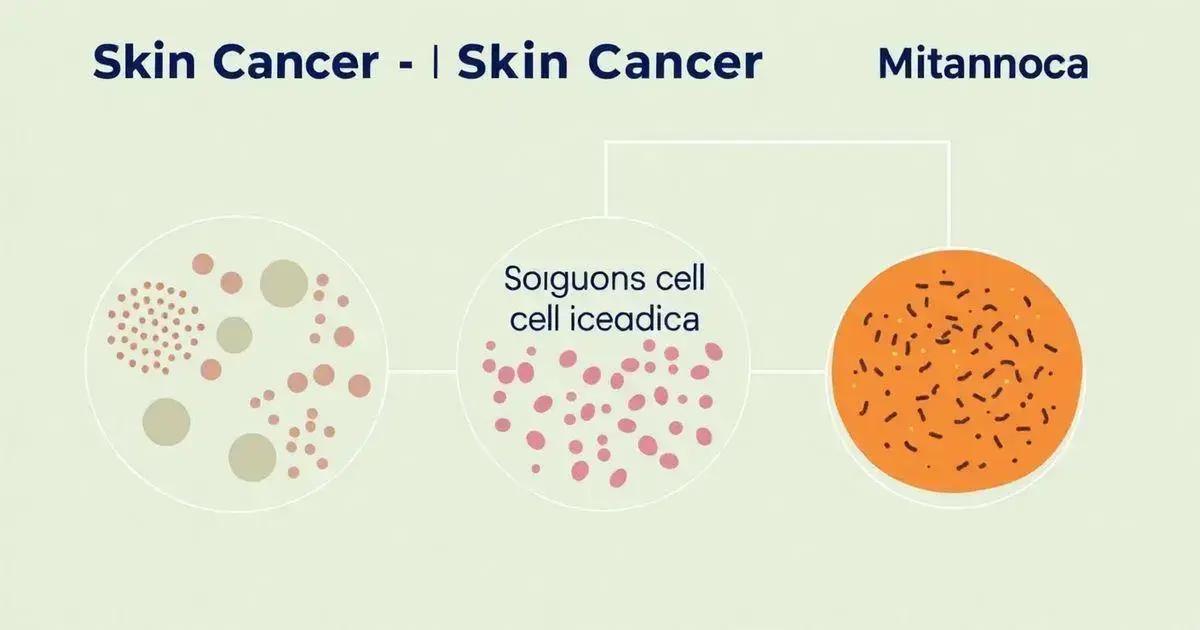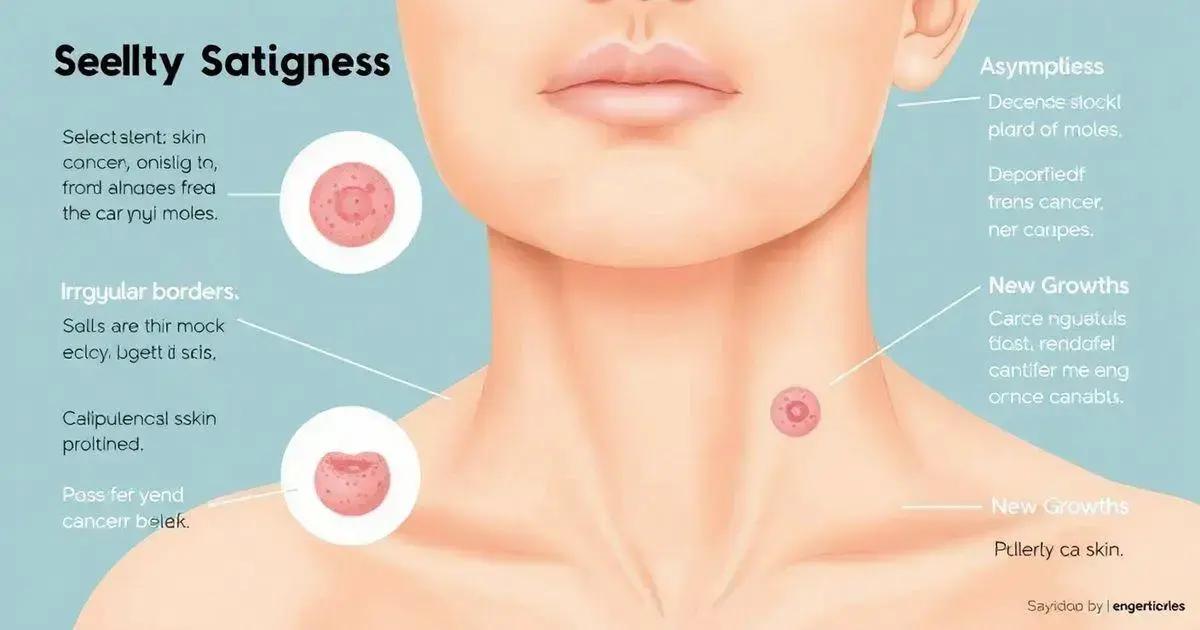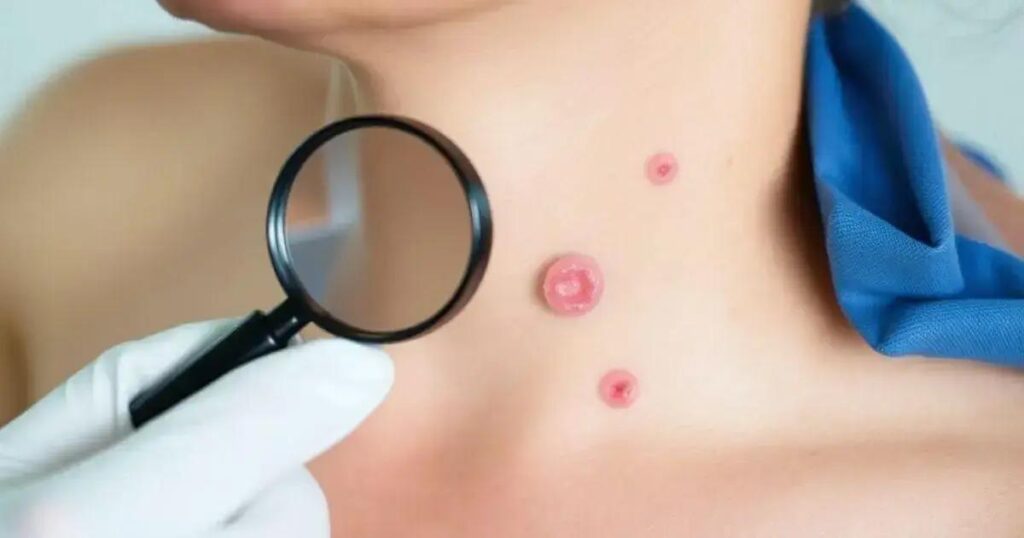Knowing how to identify and address early signs of skin cancer is crucial for your health. Look for changes in existing moles, new growths, non-healing sores, or any itching and bleeding. Regular skin check-ups with a dermatologist can lead to early detection, significantly improving treatment outcomes. If you notice any changes, document them and seek professional advice promptly.
Skin cancer is a serious health concern that affects millions each year. Knowing how to identify and address early signs can make a crucial difference in outcomes. By staying informed and proactive, individuals can catch issues before they escalate. This article will guide you through understanding skin cancer, recognizing early signs, the importance of regular check-ups, and what to do if you notice changes.
Understanding Skin Cancer: The Basics

Skin cancer is one of the most common cancers in the United States. It happens when skin cells grow uncontrollably. There are different types of skin cancer, but the most common ones are basal cell carcinoma, squamous cell carcinoma, and melanoma.
Types of Skin Cancer
Basal cell carcinoma starts in the basal cells, which are found in the outer layer of the skin. This type is usually slow-growing and rarely spreads to other parts of the body.
Squamous cell carcinoma begins in squamous cells, which make up most of the skin’s surface. This type can grow more quickly than basal cell carcinoma but is also treatable.
Melanoma is the most serious type of skin cancer. It arises from melanocytes, the cells responsible for producing pigment in the skin. Melanoma can spread to other parts of the body if not detected early.
Risk Factors
Several factors can increase the risk of developing skin cancer. These include:
- Excessive sun exposure: Spending too much time in the sun can damage the skin and lead to cancer.
- Skin type: People with fair skin, light hair, and light eyes are at a higher risk.
- Family history: A family history of skin cancer can increase your risk.
- Weak immune system: Conditions that weaken the immune system can make it harder for your body to fight off skin cancer.
Importance of Early Detection
Early detection of skin cancer is crucial. Regular skin checks can help catch any changes early. The earlier skin cancer is found, the easier it is to treat. Knowing how to look for the early signs is essential for taking action if something looks unusual.
Recognizing the Early Signs

Recognizing the early signs of skin cancer is important for effective treatment. Here are the key signs you should look out for:
Changes in Moles
Asymmetry: If a mole is uneven in shape, it may be a sign of trouble.
Borders: Look for moles with jagged or irregular edges.
Color: A mole that has multiple colors or an uneven color distribution could be suspicious.
Diameter: Moles larger than the size of a pencil eraser (about 6mm) should be examined.
New Growths
Watch for any new growths or spots on your skin. These can appear suddenly or change in size, shape, or color.
Non-Healing Sores
Sores that do not heal or keep coming back may be an early warning sign of skin cancer.
Itching or Pain
If you notice a mole or spot that itches, bleeds, or feels painful, it’s important to get it checked out by a doctor.
Regular self-exams can help you keep track of your skin’s health and identify any changes. Using a mirror to check hard-to-see areas, like your back and scalp, can be helpful.
Importance of Regular Skin Check-Ups

Regular skin check-ups are crucial for maintaining skin health and spotting potential issues early. By visiting a dermatologist, you can identify skin changes before they turn into serious problems.
Early Detection Saves Lives
Regular check-ups help in the early detection of skin cancer. The sooner a problem is found, the more effective the treatment will be. Skin cancers, when caught early, are often treatable.
Professional Evaluation
Dermatologists are trained to notice changes that may not be obvious to the untrained eye. They can provide a thorough examination of your skin and offer advice on any areas of concern.
Tracking Changes Over Time
Regular visits allow for a record of changes in your skin. Comparing photos from past visits can help both you and your doctor see how your skin has changed. This makes it easier to catch new or suspicious growths.
Building a Relationship with Your Dermatologist
Establishing a trusting relationship with your dermatologist makes it easier to discuss any concerns. This communication can lead to better skin health and timely interventions if needed.
Overall, making skin health a priority with regular check-ups is a step towards preventing skin cancer and ensuring overall well-being.
Steps to Take When You Spot Changes

When you notice changes in your skin, it’s important to take action quickly. Here are the steps you should follow:
1. Document the Changes
Take clear photos of the area or mole that has changed. Make a note of the date and any other observations, such as if it has changed in color, shape, or size.
2. Monitor for Additional Changes
Keep a watch on the spot for a few weeks. Look for further changes, such as bleeding, itching, or spreading.
3. Schedule an Appointment
If you see any new growths or changes that cause concern, schedule an appointment with a dermatologist. Provide them with your documented information.
4. Be Honest with Your Doctor
During your appointment, be honest about your concerns. Share any family history of skin cancer and describe your observations clearly.
5. Follow the Treatment Recommendations
If your doctor recommends treatment or further tests, follow their guidance. Early interventions are often the most effective.
Being proactive about changes can significantly improve your chances of catching skin cancer early.
Understanding Skin Health: The Path Forward
Recognizing and addressing early signs of skin cancer is vital for ensuring your overall health and well-being. Regular skin check-ups and being proactive about changes in your skin can lead to early detection and treatment, significantly improving outcomes.
Educating yourself about the different types of skin cancer and their early symptoms empowers you to take control of your skin health. If you notice any changes, following the right steps can make all the difference.
Remember, you are your own best advocate when it comes to health. Stay informed, be vigilant, and do not hesitate to seek professional advice when necessary.
FAQ – Frequently Asked Questions About Identifying and Addressing Early Signs of Skin Cancer
What are the early signs of skin cancer I should look for?
Early signs include changes in existing moles, new growths on the skin, non-healing sores, and any moles that itch or bleed.
How often should I get my skin checked by a dermatologist?
It is recommended to have a professional skin check-up at least once a year, but you should visit more frequently if you notice changes.
What should I do if I notice a change in my skin?
Document the changes, monitor them for a few weeks, and schedule an appointment with a dermatologist immediately.
Can skin cancer be prevented?
While not all skin cancers can be prevented, you can reduce your risk by avoiding excessive sun exposure, using sunscreen, and monitoring your skin.
What are the risk factors for skin cancer?
Risk factors include having fair skin, a family history of skin cancer, excessive sun exposure, and a weakened immune system.
Is skin cancer treatable?
Yes, skin cancer is highly treatable, especially when caught early. Treatment options vary based on the type and stage of cancer.












